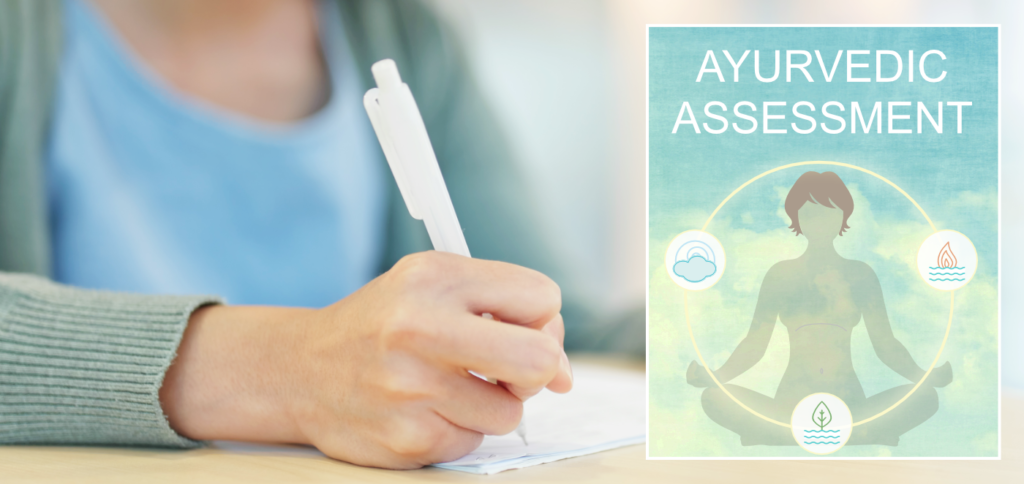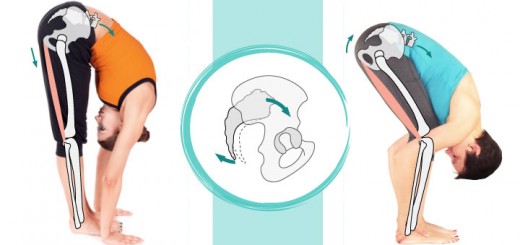How to conduct a basic Ayurvedic assessment
0Various qualities of the dosha can become imbalanced and lead to a state of ill health. The imbalance can happen because of an excess in a particular quality within the system, stemming from the combination of internal and environmental factors. For example, a vata-dominant person is more likely to develop vata imbalances. But other constitutional types might experience a vata imbalance as well. The person’s current constitutional state is defined as vikriti, and it reflects their current imbalances as a deviation from prakriti, their inborn nature. Here is a sample list of dosha-specific imbalances and potential vulnerable areas.
In yoga therapy, we usually recommend practices and lifestyle changes based on the person’s vikriti (current constitution) with the purpose of rebalancing the system and returning it to prakriti (inborn constitution). Our recommendations are usually based on an analysis of the particular qualities that appear to be imbalanced, not just a particular dosha. For example, if a student is exhibiting the signs of vata imbalance in the form of low energy, constipation, and feeling restless, these symptoms can be characterized as erratic movement (of energy, waste, and nerve impulses), which points to the vata quality of mobility. The recommendations we give would be targeting the quality of mobility with the purpose of restoring rhythmical, steady movement throughout the body. We might focus on deepening the breath, connecting breath and movement, doing slow and smooth vinyasas, and practicing Nadi Shodhana for its balancing effect. If the student exhibited symptoms that point to an imbalance of the quality of dryness (also a vata imbalance), the recommendations we give them would be very different.

How to conduct a basic Ayurvedic assessment
There are many ways to conduct an Ayurvedic assessment. Its style and content will depend on the depth of your knowledge of the Ayurvedic system, your comfort level with this model, and your personal preferences. Below is one example of how you can organize your thinking process.
- Identify the student’s dominant dosha(s) through observation and conversation. Observe your student’s physical characteristics, ask questions about their physiological processes, and note their demeanor.
- Identify your student’s balanced characteristics. Answer the question “How do I know that the student is vata (pitta/kapha) dominant?” You can use the list of the main qualities of the three doshas to select the characteristics that are more obvious in your student. For example, you might deduce that your student is kapha dominant if they have large frame, thick hair, smooth skin, and appear to be slow, measured, and thoughtful in their temperament.
- Note the main qualities of the specific Ayurvedic type that you’ve noticed in your student. Sometimes the dominant quality is obvious, and sometimes it isn’t. For example, your student might exhibit multiple signs of disorganized movement (the quality of mobility), they might have a very intense, penetrating gaze as well as a keen and engaged mind (the quality of sharpness), or they might have slow speech, methodical movements, and a mellow demeanor (the quality of slowness). The longer you practice, the easier it will be to identify the most prominent qualities.
- Identify the signs and locations of imbalance. Analyze the symptoms of discomfort that your student communicates and note whether they indicate an imbalance in a particular dosha and whether they have a particular quality in common. For example, your student might be complaining of joint pain while also having dry skin, rigid movements, and stiff, cracking joints. This might indicate a vata imbalance with the quality of dryness.
- Summarize your observations about the student’s current state. After recording your notes about your student’s constitution, pronounced qualities, and type of symptoms, it helps to summarize your thoughts and formulate a vision of what you think is going on from the Ayurvedic perspective.
- List your practice recommendations. Based on your summary, you can devise a course of action and outline the strategies to implement into your work with your student in terms of their yoga practice and general lifestyle recommendations. If the system-wide imbalance is prominent, this can become your primary area of focus; if it’s minor, you can use your knowledge of the student’s constitution to better tailor your practice to their temperament and personality.
Sequence Wiz members can easily fill out an Ayurvedic assessment for each one of their student in Student Profiles and quickly refer to all essential information about the Ayurvedic model in Yoga Models > Ayurvedic model. Check out the video below to get a glimpse into what it looks like. Sequence Wiz members also have access to a sample Ayurvedic assessment to inspire their own work.
Learn more about Sequence Wiz membership>
Next time we will talk about life’s cycles and how they affect our doshas, as well as lifestyle recommendations for dosha balancing–tune in!
[jetpack_subscription_form]



















